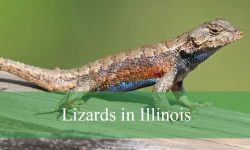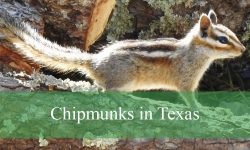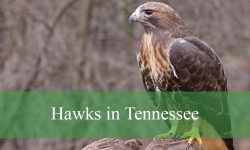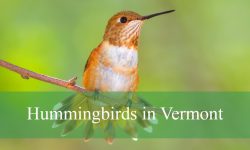North Carolina comes alive after sunset with a chorus of birdsong that surprises many people. While frogs and insects are often the first sounds of the night, birds such as mockingbirds, owls, and nightjars also fill the darkness with their calls. Their voices create an atmosphere that is both mysterious and beautiful.
Each bird sings at night for a reason. Some, like the Northern Mockingbird, use their songs to defend territory or impress potential mates. Others, such as the Eastern Whip-poor-will, call rhythmically through the night to announce their presence. Owls use their haunting hoots to communicate with partners or warn intruders.
From coastal wetlands to mountain forests, these nighttime singers can be heard across the state. Understanding their habits and recognizing their calls makes evenings in North Carolina more memorable, turning an ordinary night into an encounter with the wild.
Types of Birds That Sing at Night Found in North Carolina
Northern Mockingbird (Mimus polyglottos)

The Northern Mockingbird is one of the most recognizable nighttime singers in North Carolina. This medium-sized gray bird is famous for its remarkable ability to mimic the songs of other birds and even mechanical sounds. Males, especially during the breeding season, often sing late into the night to defend their territory and attract mates. Their varied and continuous songs make them stand out among nighttime avian vocalists.
Identifying a Northern Mockingbird is relatively easy due to its slender gray body, white wing patches, and long tail. When flying, the bold white flashes in their wings become very noticeable. Their posture and frequent perching in open areas like treetops, fences, and power lines make them highly visible in both rural and suburban settings.
These birds are extremely territorial and will defend their nesting areas aggressively against intruders, including much larger animals. Their nighttime singing is often most intense in spring and early summer, when males compete for mates. Unmated males are especially vocal, sometimes singing all night long.
In North Carolina, Northern Mockingbirds thrive in urban neighborhoods, farmlands, and open woodlands. They adapt well to human presence and are among the most commonly heard birds in both cities and rural areas. Their year-round presence ensures that residents can hear their songs in almost every season, particularly during warm nights.
Eastern Whip-poor-will (Antrostomus vociferus)

The Eastern Whip-poor-will is one of the most iconic nighttime singers in North Carolina, named after its loud and repetitive “whip-poor-will” call. These nocturnal birds are most often heard rather than seen, as their mottled brown plumage allows them to blend perfectly into forest floors and leaf litter. Their songs can continue for hours at night, especially on bright moonlit evenings in late spring and early summer.
This species is medium-sized with a stout body, rounded wings, and a short bill designed for catching flying insects. They are masters of camouflage, often perching motionless on the ground or tree branches. Their coloration makes spotting them nearly impossible unless they flush into flight.
Eastern Whip-poor-wills are primarily insectivorous, feeding on moths, beetles, and other flying insects they catch in midair. Their nocturnal lifestyle means they are most active at dusk and throughout the night. Males sing persistently to defend territory and to attract females, their voices carrying across forested landscapes.
In North Carolina, they are commonly found in open woodlands, pine forests, and areas near clearings. They prefer habitats where forest edges meet open spaces, which provide abundant food and suitable nesting grounds. Listening to their haunting calls on a summer night is a traditional experience for many residents of the state.
Chuck-will’s-widow (Antrostomus carolinensis)
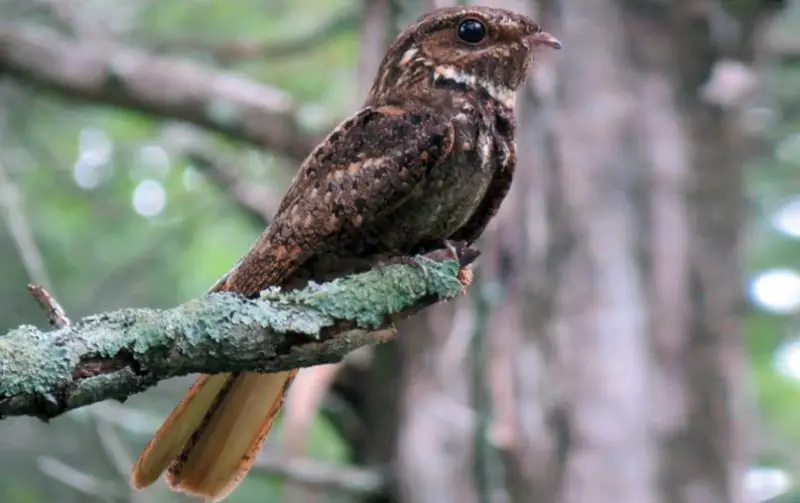
Closely related to the Whip-poor-will, the Chuck-will’s-widow is another night-singing bird that inhabits North Carolina. Its name comes from its distinctive “chuck-will’s-widow” call, a slower and deeper song than that of the Whip-poor-will. This bird is often heard at night in spring and summer, especially in the warmer regions of the state.
The Chuck-will’s-widow is the largest nightjar in North America. It has a stocky body, long wings, and cryptic plumage that blends with dead leaves and bark. Its earthy brown and gray coloring makes it nearly invisible when roosting during the day. Spotting one is a rare treat for birdwatchers.
Like other nightjars, it feeds almost exclusively on nocturnal insects, particularly moths and beetles. It hunts on the wing, flying silently under the cover of darkness. Its wide mouth is perfectly adapted to scooping insects from the air.
In North Carolina, Chuck-will’s-widows are most common in pine forests, hardwood groves, and open country with scattered trees. They are particularly abundant in the Coastal Plain and Piedmont regions. Their mysterious nighttime calls often echo through southern woodlands, creating a memorable soundscape.
Common Nighthawk (Chordeiles minor)
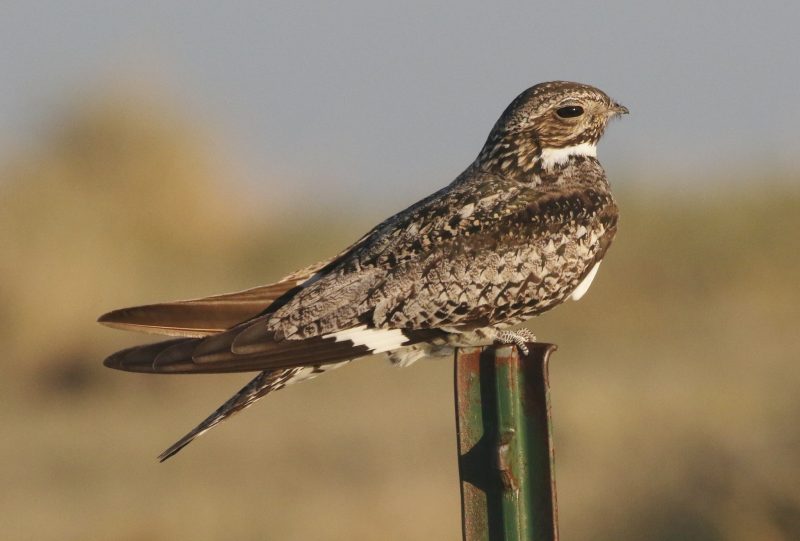
The Common Nighthawk is another nighttime caller in North Carolina, although it is most often heard at dusk and dawn. Its sharp “peent” calls and dramatic aerial dives create a distinctive presence during summer evenings. Males perform booming dives with their wings to attract females, producing sounds that carry through the twilight hours.
This bird has long, pointed wings with a noticeable white bar, a slim body, and a slightly notched tail. Its cryptic brown and gray plumage helps it blend into rooftops, gravel, and bare ground where it often rests during the day. In flight, its erratic, bat-like movements make it easy to identify against the evening sky.
Common Nighthawks feed on flying insects, catching them on the wing with their large mouths. They are highly adapted for aerial hunting and often gather in loose flocks over fields, lakes, or urban areas where insects are abundant. Their nocturnal habits and active feeding make them an important part of the nighttime ecosystem.
In North Carolina, they are widespread during migration and breeding season, particularly in open habitats, grasslands, and cities. They frequently nest on flat gravel rooftops, making them a familiar sight even in urban settings. Their calls and diving displays are common sounds on warm summer nights.
Yellow-breasted Chat (Icteria virens)
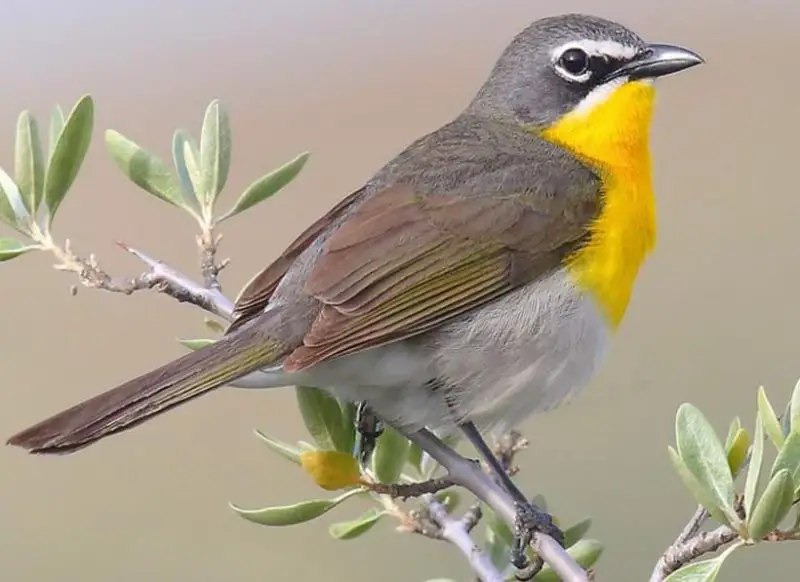
Although not strictly nocturnal, the Yellow-breasted Chat is known to sing into the night, especially during the breeding season. This bird produces a wide variety of whistles, squawks, and chattering notes that can be surprisingly loud and persistent. Males sometimes sing well after sunset as part of their territorial and courtship displays.
The Yellow-breasted Chat is the largest member of the warbler family, easily recognized by its bright yellow chest, olive-green back, and white “spectacles” around the eyes. Its bulky size and loud, varied calls set it apart from other warblers. Despite its size and voice, it can be difficult to spot as it prefers dense shrubs and thickets.
During the breeding season, males often deliver their songs from exposed perches or even in short display flights. Their vocalizations are extremely varied, combining whistles, harsh notes, and mimicry. Night singing is particularly common in spring when males are establishing territories.
In North Carolina, Yellow-breasted Chats are summer residents, found mostly in shrubby fields, forest edges, and overgrown clearings. Their presence is more noticeable by sound than sight, especially at night when their strong voices carry across the landscape.
Eastern Screech-Owl (Megascops asio)
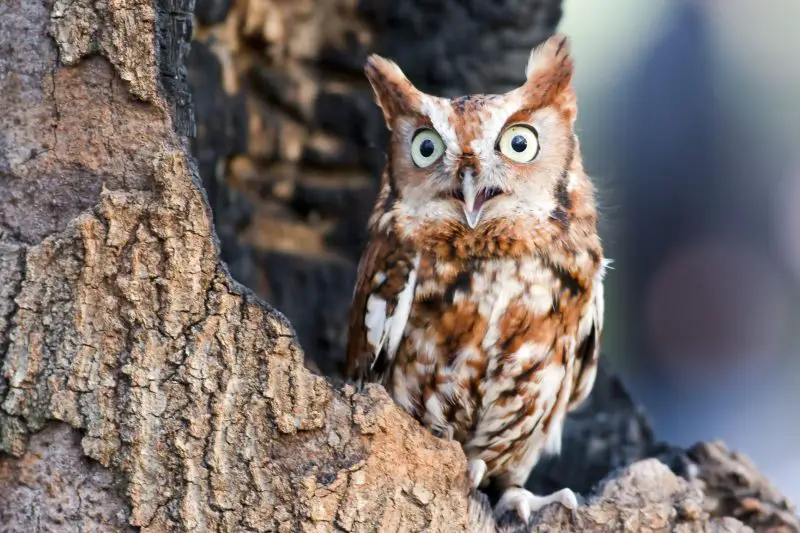
The Eastern Screech-Owl is one of the most common nighttime singers in North Carolina. Despite its small size, it produces a haunting tremolo or descending whinny call that often echoes through woodlands after dark. These owls are active year-round and are often heard more than seen due to their nocturnal habits and excellent camouflage.
This owl is small, with a compact body, rounded head, and yellow eyes. It comes in two color morphs—gray and reddish-brown—both of which blend seamlessly with tree bark. Its short ear tufts add to its classic owl-like appearance, though they are not always visible.
Eastern Screech-Owls are opportunistic hunters, feeding on insects, small mammals, birds, and reptiles. They perch quietly before swooping down on unsuspecting prey. Their varied diet and adaptability make them successful in both wild and suburban environments.
In North Carolina, they are widespread across forests, parks, and even backyards with mature trees. Their eerie nighttime calls are a familiar sound to residents, especially during spring and summer nights when they are most vocal.
Barred Owl (Strix varia)
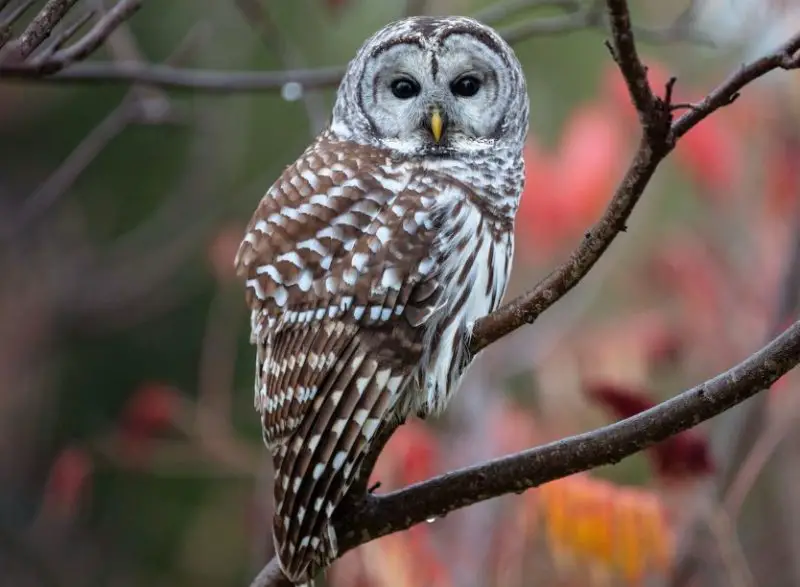
The Barred Owl is another well-known nighttime singer in North Carolina, easily recognized by its distinctive “who cooks for you, who cooks for you-all?” hooting call. Their loud voices can travel long distances, making them one of the most frequently heard owls in the region. They are active at night but may also call during the day.
Barred Owls are large with rounded heads, dark eyes, and a heavily barred brown-and-white plumage. Unlike many other owl species, they lack ear tufts, which gives their faces a rounded appearance. Their striking dark eyes make them stand out among North American owls, most of which have yellow eyes.
These owls primarily hunt small mammals, birds, reptiles, and amphibians. They are patient predators, often sitting silently before gliding down to capture prey. Their hooting is part of territorial defense and mate communication, especially during breeding season.
In North Carolina, Barred Owls are common in mature forests, swamps, and wooded river valleys. They thrive in moist habitats and are often heard in rural and suburban areas where forests remain intact. Their loud, resonant calls make them a memorable part of the state’s nighttime soundscape.
Great Horned Owl (Bubo virginianus)
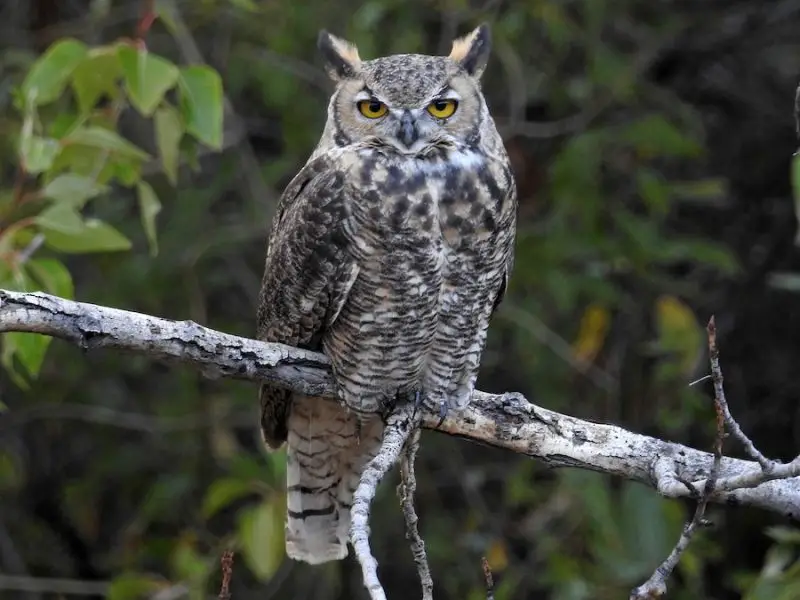
The Great Horned Owl is the largest nocturnal singer in North Carolina, known for its deep and resonant hoots. Its call, often described as “hoo-hoo-hoo hoo hoo,” can be heard across forests, fields, and even city outskirts. They are most vocal during the winter breeding season, when pairs call back and forth to strengthen bonds and defend territories.
This powerful owl has a stocky body, large yellow eyes, and prominent ear tufts, which give it a fierce expression. Its mottled brown plumage provides excellent camouflage against tree trunks. With a wingspan of up to five feet, it is an impressive bird of prey.
Great Horned Owls are apex predators, feeding on rabbits, squirrels, skunks, birds, and even other raptors. Their strength and adaptability allow them to dominate many ecosystems. They are skilled hunters, using stealth and powerful talons to subdue prey.
In North Carolina, they are widely distributed and adaptable to different environments, including forests, wetlands, and open country. Their booming calls are among the most iconic nighttime sounds in rural areas, often heard echoing across the landscape on cold nights.
American Woodcock (Scolopax minor)
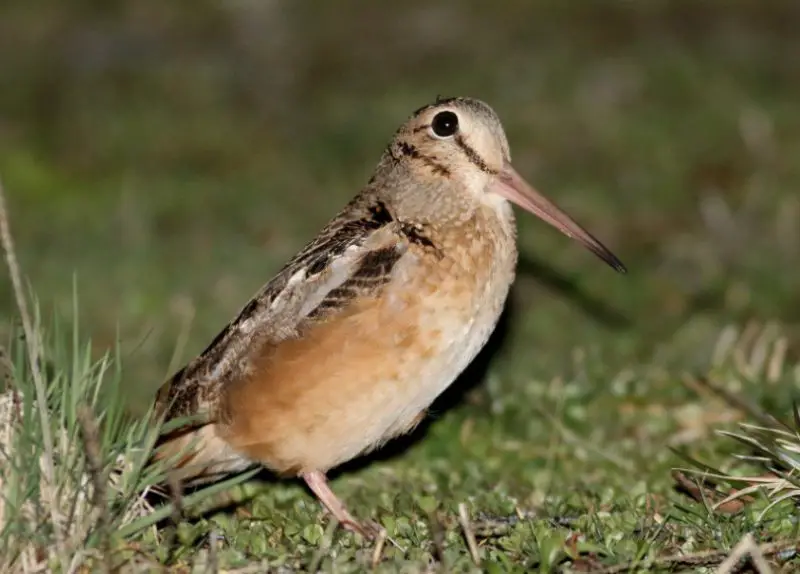
The American Woodcock is a unique bird that contributes to the nighttime chorus in North Carolina. During the breeding season, males perform elaborate courtship displays at dusk and into the night. Their calls include a nasal “peent” sound, followed by an aerial display with twittering wing noises. These displays make them one of the most unusual night singers in the state.
This bird has a plump, round body with a long, straight bill adapted for probing soil for earthworms. Its mottled brown and gray plumage provides excellent camouflage in leaf litter, making it difficult to spot when still. Its large eyes, set high on its head, give it excellent vision in low light.
The American Woodcock is mainly nocturnal, foraging at night in moist fields and woodland edges. It feeds primarily on earthworms and insects, which it extracts from the soil with its sensitive bill. Its courtship flights, however, are its most notable nighttime behavior.
In North Carolina, they are most often encountered in early spring when males perform their evening displays in open fields and clearings. Their unusual sounds and flights attract birdwatchers who seek out this seasonal spectacle.
Killdeer (Charadrius vociferus)
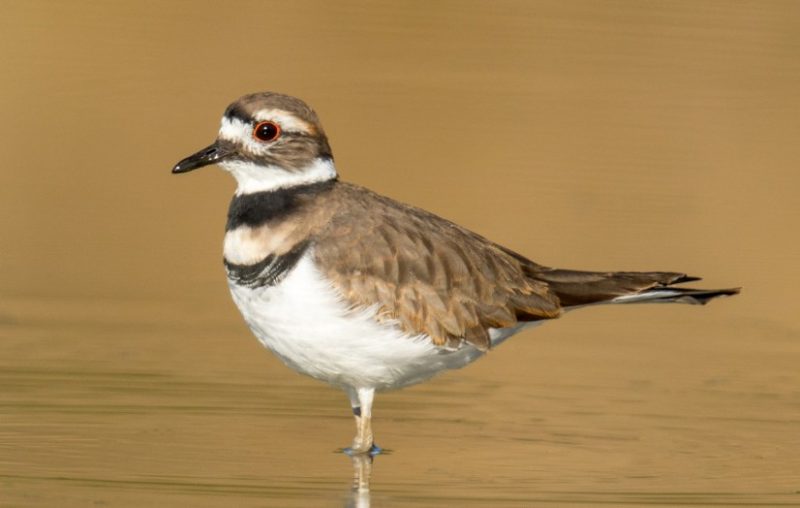
The Killdeer is another bird that frequently sings at night in North Carolina. This plover produces loud, piercing “kill-deer” calls, which are often heard after sunset and sometimes throughout the night. Its nocturnal vocal activity is most noticeable during migration and breeding seasons.
This medium-sized shorebird has a slender body, long legs, and distinctive double black breast bands. Its brown back and white underparts help it blend into fields and open ground. In flight, it shows a bright orange rump and white wing stripes.
Killdeer often feed at night, especially during warm months, when insects and invertebrates are more active. They forage in fields, shorelines, and pastures, using quick runs and stops to catch prey. Their loud calls serve as both alarm signals and territorial markers.
In North Carolina, Killdeer are widespread in open habitats, including agricultural fields, grasslands, riverbanks, and even suburban lawns. Their calls are often heard in rural areas on summer nights, adding to the nocturnal bird chorus of the state.
Best Time and Place to Hear Night-Singing Birds in North Carolina
The best time to hear night-singing birds in North Carolina is from late spring through early summer, when many species are in their breeding season. During this period, birds such as the Northern Mockingbird, Eastern Whip-poor-will, and Yellow-breasted Chat sing persistently at night to establish territories and attract mates. Owls, including the Eastern Screech-Owl and Barred Owl, are most vocal in the cooler months, particularly late winter and early spring when courtship begins.
For locations, forests, fields, and wetlands are excellent habitats to explore. The Piedmont and Coastal Plain regions are rich in Whip-poor-wills and Chuck-will’s-widows, while wooded river valleys and swamps are prime areas for hearing Barred Owls. Urban and suburban areas also provide plenty of opportunities, especially for hearing the Northern Mockingbird, Killdeer, and Eastern Screech-Owl right in neighborhoods and parks.
The best hours to listen are typically just after sunset and during moonlit nights, when activity peaks. For species like the American Woodcock, twilight displays in open fields are especially rewarding to witness. In contrast, owls and mockingbirds can often be heard well into the early morning hours, making them accessible to both casual listeners and dedicated birders.
FAQs about Night-Singing Birds in North Carolina
Why do some birds sing at night?
Birds sing at night primarily to defend territory and attract mates, especially during the breeding season. Nocturnal species such as owls also call to communicate with partners and to establish dominance in their range.
Are Northern Mockingbirds always this loud at night?
Northern Mockingbirds are especially vocal during the breeding season in spring and summer. Unmated males may sing all night long until they secure a mate, which is why they can seem unusually persistent.
Where can I hear Whip-poor-wills in North Carolina?
Whip-poor-wills are best heard in open woodlands, pine forests, and forest edges during late spring and early summer evenings. The Piedmont and mountain foothills are particularly good regions for listening to their repeated calls.
Do owls only call in the winter?
No, owls can call year-round, but Great Horned Owls are most vocal in winter during their breeding season, while Barred Owls and Eastern Screech-Owls call more frequently in spring and summer.
Can I attract night-singing birds to my backyard?
Yes, by planting native shrubs, trees, and maintaining open spaces, you can attract mockingbirds, chats, and owls. Providing a healthy insect population also supports species like nighthawks and whip-poor-wills that feed primarily on flying insects.


